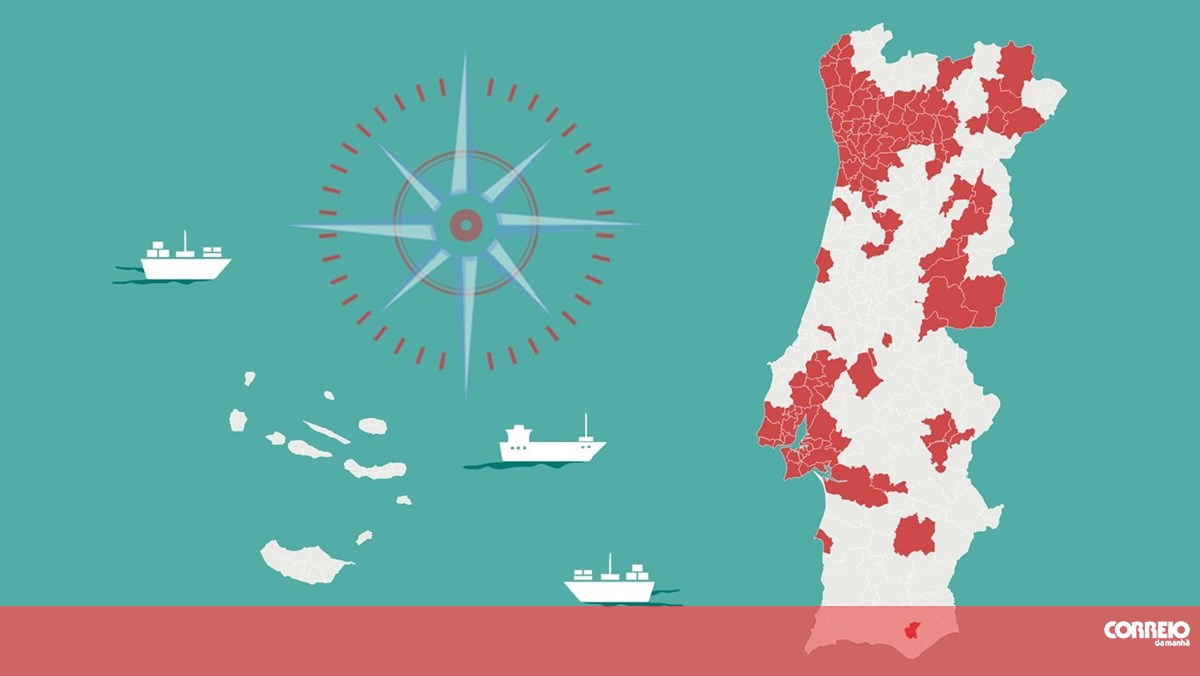
[ad_1]
(Note: Click on each municipality on the map to find out how many cases your municipality must have in 14 days to be subject to more restrictions than how many it had in the 14 days until October 26)
The prime minister announced on Saturday, after a meeting of the Council of Ministers, that the exceptional measures that were applied to the municipalities of Felgueiras, Lousada and Paços de Ferreira will be extended, as of November 4, to 118 more municipalities.
These more restrictive measures include the duty of home collection, compulsory teleworking whenever possible, closing at 10:30 p.m. in restaurants and 10:00 p.m. in stores.
António Costa did not indicate on what date the Government relied on the elaboration of the list of covered municipalities, since the first criterion is that the municipalities register more than 240 cases per 100,000 inhabitants in the last 14 days.
The Prime Minister also noted that some municipalities were placed on the list despite not reaching that limit, but because they were surrounded by municipalities where this criterion was met. And he exemplified with some municipalities on the south bank of the Tagus, such as Moita or Montijo.
Costa also pointed out that in municipalities with a lower population density and where the limit of 240 cases per 100,000 inhabitants is exceeded due to an outbreak limited to a nursing home, for example, the measures will not be applied. And he cited as an example the municipality of Alvaiázere, in the district of Leiria.
Only 46 counties over the limit on Oct. 26
Even considering the exceptions and the inclusion of municipalities below the threshold of 240 cases per 100,000 inhabitants but bordering on others that exceed the threshold, the discrepancy in the number of municipalities covered with the latest public data is significant.
According to the latest data from the Directorate General of Health (DGS) by municipality, published on October 26, and the most recent population data calculated by the National Institute of Statistics (INE), it seems that only 46 municipalities passed the criteria defined by the Government.
Last Monday, the municipalities with the highest number of cases per 100,000 inhabitants registered in the previous 14 days were Paços de Ferreira (1,951.4) and Lousada (1,268.3), which were already subject to more restrictive measures. Felgueiras, the third municipality to which these restrictions already apply, ranked sixth, with 609.7 cases per 100,000 inhabitants in the last 14 days.
Above Felgueiras were Vizela, Mogadouro and Borba.
And, for example, Fornos de Algodres had a value of only 88.3 and appears on the list. This despite the fact that none of the municipalities with which it borders exceeded the threshold of 240 on October 26.
In 107 counties, 20 cases are enough to exceed the limit
In more than a third of the 308 Portuguese municipalities, 20 or fewer new infections are needed in 14 days for the threshold of 240 new cases per 100,000 inhabitants to be exceeded.
The Azorean municipality of Corvo needs only two infected to meet the criteria defined by the Government. And in the counties of Barrancos, in Alentejo, and Lajes das Flores, in the Azores, four infections are enough.
In 32 municipalities the threshold is exceeded with the occurrence of 10 or fewer cases.
At the opposite extreme, there are six counties in which more than 500 new infections are needed to exceed the proportion of 240 new cases per 100,000 inhabitants.
Four of these municipalities are located in the Lisbon Metropolitan Area (AML): Lisbon (1,223 cases), Sintra (940), Cascais (513) and Loures (513). The remaining two, Vila Nova de Gaia (722) and Porto (520), belong to the Porto Metropolitan Area (AMP).
In 21 counties, an average of at least 20 new infections per day is required for 14 days, that is, 280 cases, to exceed 240 new infections per 100,000 inhabitants.
[ad_2]